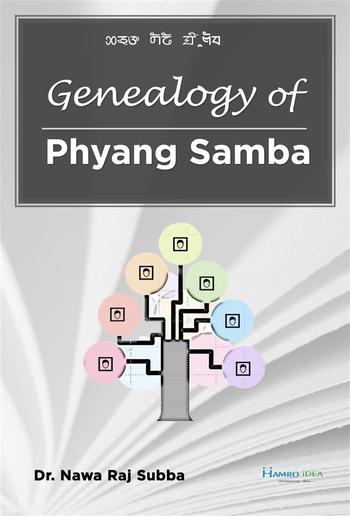
Nawa Raj Subba - Genealogy of Phyang Samba
Genealogy of Phyang Samba
Nawa Raj Subba
Description
A genealogy is an orderly list of males or fathers, sons or descendants. It has been discovered that genealogy evolves through biological kinship and socio-cultural adaption. As a result, genealogy is the study of a clan's origin, history, and behavior. This ethnic knowledge exposes their mythical and historical past and their social and cultural development.A family tree is yet another name for a genealogy. However, I discovered a significant distinction between genealogy and family tree. I found an unequal situation to the evolution of a plant's stem and branches, as indicated in the clan family tree. There is also a Misal Bhai, Manas Putra, or adopted brother arrangement among the clan. Even when there is a majority of the hereditary or biological family, including an inclusive element is crucial in any surname, caste, or nation (Samba, Limbu, Rai, Kirat, etc.).So, there is confusion caused by the term "family tree." People often equate the beginning of their clan to a tree or a branch when they visualize it. It is currently thought that all children with the same last name share the same biological father. To clear up this misunderstanding, the term "genealogy" would seem more fitting than "family tree." However, I used both words throughout the book. The genealogy I have provided is more schematic nomenclature than objective details.According to history and genealogy, the Phyang family rose to prominence within the Samba family around 300 years ago. Similarly, it is believed that the Samba dynasty connected to Phyang emerged from the Sen Rai community circa 700 years ago. Sen's ascent can be traced back to the Kirat people thousands of years ago.That expression serves as a framework for understanding history. Today, we have credible data, evidence, or material about the history of Sen and Kirat. These evidence or documents are dispersed. However, the history and knowledge of the Samba community or the Phyang family have been restricted to a small family. Many of its facts have vanished. The process of determining the lineage of Samba Phyang has been completed here based on the remaining evidence and information. If viewed as a model, many of the circumstances and content conveyed by this genealogy can be utilized in other community studies.

